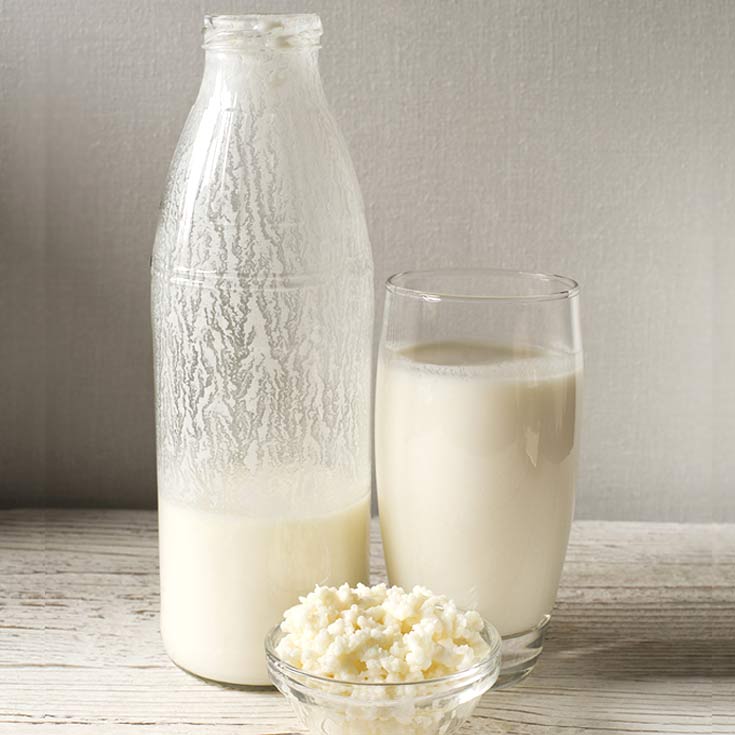What is Kefir?
Kefir is a fermented beverage, of which there are several types. Most commonly Kefir is made by fermenting milk, but there are non dairy variants, such as water Kefir, and coconut water Kefir.
Kefir is a centuries old drink that originated in the North Caucasus mountains. The name ‘Kefir’ is derived from the Turkish word ‘keif” which translates as ‘good feeling’ which is how one should feel after drinking it.
What does Milk Kefir taste like?
Milk Kefir has a sour, tangy flavour, similar to that of yoghurt. It is slightly thicker than milk, but still with a pourable consistency and can be slightly effervescent.
What does Water Kefir taste like?
Water Kefir has a slight fermented taste. Anyone who has enjoyed ginger beer will find it has a familiar flavour. It is usually combined with fruit or juice for a second fermentation to add flavour and increase fizzyness.
What does Coconut Kefir taste like?
Coconut Kefir has the flavour of the coconut, but is less sweet than unfermented coconut water due to the sugar being mostly used up during the fermentation process. It has the ‘tang’ of a fermented beverage.
What are the benefits of drinking Kefir Milk?
Kefir is a probiotic beverage containing beneficial yeast and bacteria that help colonise our gut and improve digestion.
In addition to being a powerful probiotic, Kefir is a rich source of vitamins B12 and K2, essential for healing and repair, including bone and dental health. Kefir also contains many minerals like calcium, magnesium and phosphorus.
Fermentation of the milk causes the proteins to be partially digested and therefore easier for the body to utilize.
Water and coconut Kefir will have a different nutrition profile, based partly on the yeast and bacteria, and partly on the liquid the starter has been added to. These can be better suited to those who are very sensitive to lactose or have a casein intolerance.
What if I’m lactose intolerant?
During the fermentation process the yeast and bacteria feed on the lactose (the sugar present in the milk) and convert most of it to lactic acid. Due to this process many people with lactose intolerance can tolerate milk Kefir. In fact, it may even help improve lactose digestion in those who have a lactose intolerance. (1)
That being said, there is no one answer for everyone and individuals should try for themselves. Care may also be needed that the Kefir was fermented long enough for most of the lactose to be broken down.
What’s the difference between milk Kefir and yoghurt?
Kefir and yoghurt contain different strains of bacteria. The bacteria in yoghurt while beneficial to the gut, are transient and pass through, whereas the bacteria in Kefir can colonise the intestinal tract, providing potent and long term benefit. Kefir generally contains a much wider variety of bacteria, and also contains beneficial yeasts.
Kefir is also easier to digest due to the curd being smaller in size than yoghurt.
Read More In Our Good Gut Health Series
Understanding Your Gut Health & Microbiome
Difference between Probiotics & Prebiotics
How To Make Kefir
Using Kefir In A Recipe – Greek Tzatziki Sauce
How To Make Fermented Vegetables
Using Fermented Vegtable In A Recipe – Water Cress Salad

